Focusing on Fire Safety: Prevention, Training, and Protection
Posted by Anthony Webb on Apr 8th 2025
According to the U.S. Bureau of Labor Statistics, 104 workplace fatalities due to fires and explosions occurred in 2022, accounting for approximately 2% of all fatal occupational injuries that year. This sobering statistic underscores the need for strong fire safety policies, proper training, and proactive prevention measures to protect lives.
Fire safety cannot be overlooked—it is essential for keeping our families, workplaces, and communities safe. Fires can spread rapidly, leaving little time to react, so awareness, preparation, and safety protocols are crucial. Understanding fire prevention and response strategies can make all the difference at home or in high-risk workplaces.
This article provides a comprehensive overview of fire safety fundamentals, covering prevention measures, emergency planning, workplace training, fire safety for children, and protective equipment. By learning and implementing these best practices, we can all take proactive steps to reduce fire hazards and enhance community safety.
What is fire safety?

Fire safety refers to the measures taken to prevent fires, reduce fire hazards, and control the spread of fire when it occurs. Fire safety is vital in protecting homes, workplaces, and public spaces, ensuring people and property remain safe. A strong fire safety strategy includes fire-resistant materials, proper fire prevention practices, emergency preparedness, and compliance with fire regulations. Fire safety is critical in the workplace, as different industries face unique fire hazards requiring specialized training, equipment, and protective gear. Fire safety is about being proactive rather than reactive, whether the fire threat is at home or work.
Key elements of fire safety include:
- Fire Prevention: Conducting regular fire risk assessments, properly storing flammable materials, and following OSHA and NFPA fire codes.
- Fire Detection & Suppression: Installing and maintaining smoke alarms, sprinkler systems, and fire extinguishers.
- Emergency Preparedness: Developing evacuation plans, conducting fire drills, and training employees on fire response procedures.
- Fire-Resistant Clothing: Using flame-resistant clothing and PPE in high-risk workplaces to reduce injury risks.
Individuals and businesses can significantly reduce fire-related risks by understanding and implementing basic fire safety measures. But fire safety isn’t just about fire prevention—it’s also about being prepared to act quickly in a fire-related emergency. That’s why having a clear fire safety plan is essential at home and in the workplace.
Have a Plan at Work
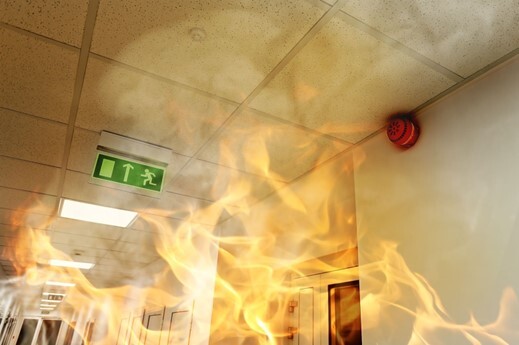
Regardless of industry, every workplace must have a clear and well-documented fire safety plan to protect employees, visitors, and property. Fires can spread in seconds, making preparedness critical to minimizing damage and ensuring safe evacuations. The Occupational Safety and Health Administration (OSHA) requires that businesses implement fire prevention and emergency action plans, outlining potential hazards, safety procedures, and employee responsibilities. However, fire safety is not just about compliance—it’s about creating a culture of awareness and readiness. Different industries face unique fire risks, meaning fire safety plans must be tailored to workplace-specific hazards.
Key elements of an effective workplace fire safety plan include:
- Fire Hazard Identification & Prevention: Identify fire risks, control ignition sources, and store flammable materials safely. [29 CFR 1910.39(c)(1)]
- Emergency Procedures & Evacuation Plans: Ensure all employees know evacuation routes, assembly points, and their roles in an emergency. [CFR 1910.39(c)(2)]
- Fire Protection & Detection Systems: Maintain fire alarms, sprinkler systems, extinguishers, and emergency exits to comply with OSHA and NFPA standards. [29 CFR 1910.39(c)(3)]
- Employee Training & Responsibilities: Designate fire safety personnel, provide ongoing training, and conduct regular fire drills to reinforce safety protocols.
While every workplace must meet basic fire safety requirements, some industries require additional precautions. Due to their higher risks, manufacturing plants, chemical facilities, and construction sites must implement specialized fire protection measures. No matter the industry, a well-structured plan is essential to protecting workers.
Fire Safety Training and Certification
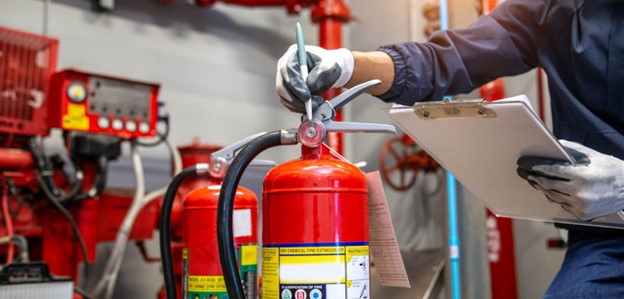
Injuries can occur in any industry, from offices and warehouses to manufacturing plants and construction sites. OSHA requires businesses to implement fire detection, prevention, and evacuation measures, but the most effective way to protect employees is through fire safety certification and training programs. These programs teach fire risk management, emergency response, and regulatory compliance, ensuring that workplaces are prepared to prevent and respond to fires.
Core components of workplace fire safety training include:
- OSHA Fire Safety Regulations: Understanding OSHA’s fire detection, prevention, and emergency action plan requirements.
- Fire Extinguisher Use & Emergency Response: Learning to assess fire risks, operate extinguishers, and follow evacuation procedures.
- Industry-Specific Fire Hazards: Addressing unique risks in transportation, healthcare, construction, and manufacturing environments.
- Fire Prevention & Hazard Communication: Identifying potential ignition sources, handling hazardous materials, and maintaining fire safety equipment.
Investing in fire safety training and certification helps businesses comply with OSHA and NFPA regulations, protect lives, reduce property damage, and improve workplace safety culture. Fires are unpredictable, and knowing how to prevent, detect, and respond effectively is crucial in any industry. However, workplace fire safety is only part of the equation, and having a fire safety plan at home is just as important.
Have a Plan at Home

Fire safety at home is as important as fire safety in the workplace. A well-prepared fire evacuation plan can mean the difference between life and death, as fires can spread quickly, often in as little as one to two minutes. Every household should have a clear, well-practiced escape plan, ensuring all family members know how to respond in an emergency. The National Fire Protection Association (NFPA) emphasizes the importance of early detection and rapid response, with working smoke alarms providing the first line of defense. Since fires can occur anytime, everyone in the home should be prepared to act immediately.
Key elements of a home fire safety plan include:
- Fire Escape Routes & Exits: Identify two ways out of every room and ensure doors and windows open easily, and paths aren’t obstructed.
- Smoke Alarms & Detection: Install smoke alarms in bedrooms, hallways, kitchen, and on every level of the home, testing them monthly.
- Meeting Point & Communication: Establish a safe location outside where everyone will gather and ensure children know how to call 911.
- Special Considerations: To ensure a safe escape, assign assistance to infants, elderly family members, or individuals with mobility challenges. Also, consider the evacuation plan for pets.
A well-thought-out fire plan is only effective if it is practiced regularly. Families should conduct fire drills twice yearly, ensuring everyone can escape safely in under two minutes. Fires don’t just happen in homes—understanding fire safety in shared living spaces, such as apartments and dormitories, is also crucial.
Don’t Forget the Kids
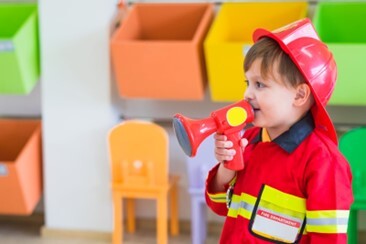
Young children, particularly those under five, are twice as likely to die in a home fire compared to adults. Tragically, many home fires are caused by children playing with matches, lighters, or other household items that can easily ignite. Teaching kids about fire safety early on—before an emergency occurs—can make a life-saving difference. Parents and guardians should ensure their children understand fire risks, know how to respond in an emergency and practice safe habits daily.
Here are the most critical fire safety lessons for kids:
- Prevent Fire-Starting Accidents: Keep matches, lighters, and other flammable materials out of reach, and consider using flameless candles.
- Teach Fire Escape Skills: Ensure children know two ways out of every room, where to meet outside, and how to crawl low under smoke.
- Make Fire Alarms Familiar: Regularly test smoke alarms and teach kids what they sound like and what to do when one goes off.
- Practice Fire Drills Regularly: Run fire escape drills at least twice a year, including at night, to ensure kids react quickly and safely.
Fire safety isn’t just about preventing accidents—it’s about helping children stay calm and act fast in an emergency. Teaching kids to STOP, DROP, and ROLL if their clothing catches fire and reinforcing the rule to “get out, stay out” can prevent injuries or worse. Fire preparedness should be a family effort, ensuring everyone knows what to do during a fire.
Safety Tips
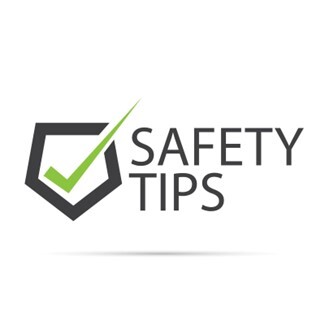
Fire prevention starts with awareness and action. Taking simple precautions can significantly reduce fire risks at home, work, or in a shared living space. Organizations like the Red Cross and the National Fire Protection Association (NFPA) emphasize that early detection, proper fire prevention habits, and quick response are the most effective ways to protect lives and property. Fires can escalate within two minutes, so proactive fire safety measures are essential for minimizing damage and ensuring survival.
To keep your home and workplace safe, follow these essential fire safety practices:
- Stay Alert When Cooking: Unattended cooking is a leading cause of home fires. Never leave stoves or ovens unattended; keep flammable items away from heat sources.
- Maintain Safe Electrical Practices: Inspect electrical cords for damage, avoid overloading outlets, and replace faulty wiring to prevent electrical fires.
- Install and Test Smoke Alarms: Ensure smoke alarms are installed on every level of your home and workplace, particularly near bedrooms, and test them monthly.
- Keep Exits Clear and Plan Your Escape: Identify two ways out of every room, keep pathways free of clutter, and practice fire escape drills with your family or coworkers at least twice a year.
Additional precautions may be required for apartments, dormitories, or other shared buildings. Many property management companies have specific fire safety guidelines, including designated evacuation routes, fire extinguisher locations, and restrictions on open flames or prohibited electrical devices. Knowing and following these building-specific policies can prevent unnecessary risks.
Fire Safety Week
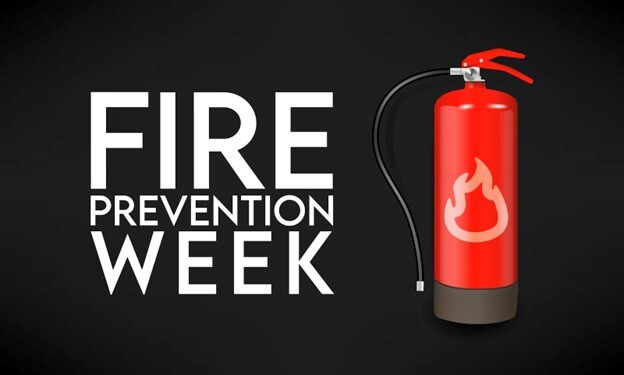
Since 1922, the National Fire Protection Association (NFPA) has sponsored Fire Prevention Week, making it the longest-running public health campaign in the United States. Held every October, this initiative focuses on educating families, schools, and workplaces about the importance of fire safety, prevention, and emergency preparedness. Firefighters and fire safety professionals take this opportunity to engage communities, raise awareness, and share life-saving strategies to help prevent fire-related injuries and fatalities.
Each year, Fire Prevention Week highlights a specific theme, emphasizing key fire safety topics such as smoke alarm maintenance, escape planning, and kitchen fire prevention. Schools, businesses, and fire departments organize demonstrations, fire drills, and educational programs to ensure children and adults understand how to react in a fire emergency.
Keeping You Protected
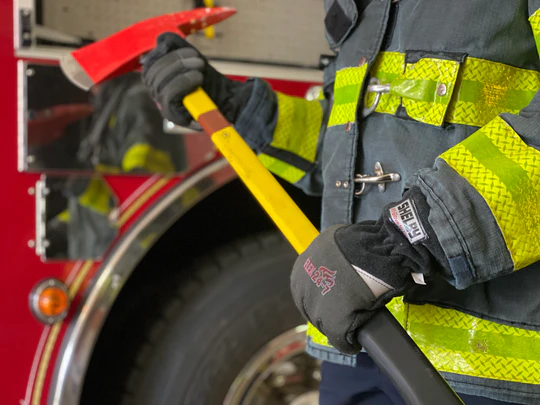
Fire safety education doesn’t stop with awareness—it also includes having the proper protective gear to reduce risks and prevent injuries. In high-risk work environments where fire hazards are a daily concern, flame-resistant clothing (FRC) and personal protective equipment (PPE) protect workers from burns and other dangers. Appropriate PPE can mean the difference between minor exposure and severe injury, making its proper selection an essential part of any comprehensive fire safety plan.
MCR Safety is dedicated to keeping workers safe by providing industry-leading protective gear and valuable education on workplace fire hazards. Our commitment goes beyond supplying PPE—we equip businesses with the knowledge and resources they need to build a safer work environment. Whether it’s flame-resistant clothing, heat-resistant gloves, or other specialized protective solutions, we help ensure workers are prepared, protected, and confident in staying protected.
Click this image to leave us comments, questions, or any concerns.
For over 50 years, MCR Safety has proven to be a world leader in gloves, glasses, and garments. Whether it's keeping workers informed about fire safety or arming them with advanced PPE, we are there to provide solutions to workplace hazards. It's all part of our commitment to protect people.
No matter your industry, we have the personal protective equipment you need.
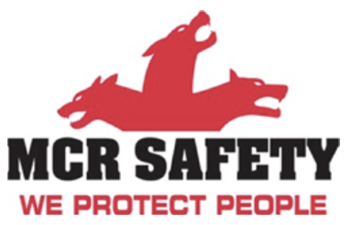
Learn more about MCR Safety by checking out our most recent video. For more information, browse our website, request a catalog, find a distributor, or give us a call at 800-955-6887.


